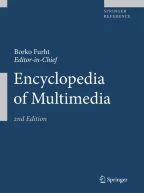Definition
The term automated lecture recording describes processes that aim to capture instructional classroom or lecture-hall events with a minimal use of manual processing.
Introduction
Providing recorded lectures for download or online viewing over the Internet has become popular at many universities. Educational institutions use such recordings as a means to make classes available to more people. In addition, providing classroom recordings online can improve education for their local students – for example, to cope with conflicting dates, to catch up with presentations they missed due to illness, or by simply offering them the ability to repeat parts of selected lectures when preparing for exams. Recorded courses are usually made available for download through a web browser or for online viewing via streaming. Recent trends also include the distribution of lecture recordings via podcasting [1].
Traditionally, lectures...
Access this chapter
Tax calculation will be finalised at checkout
Purchases are for personal use only
References
D.J. Malan, “Podcasting Computer Science E-1,” ACM SIGCSE Bulletin, Vol. 39, No. 1, March 2007, pp. 389–393.
D.J. Gemmell, C.G. Bell, “Noncollaborative Telepresentations Come Of Age,” Communications of the ACM, Vol. 40, No. 4, April 1997, 79–89.
R. Mertens, G. Friedland, A. Krüger, To See or Not To See: “Layout Constraints, the Split Attention Problem and their Implications for the Design of Web Lecture Interfaces,” World Conference on E-Learning, in Corporate, Government, Healthcare & Higher Education (E-Learn 2006), October 2006, Honolulu, HI, USA.
G. Friedland, “Adaptive Audio and Video Processing for Electronic Chalkboard Lectures,” Doctoral dissertation, Freie Universität Berlin, Department of Computer Science, October 2006.
G.D. Abowd, “Classroom 2000: An Experiment with the Instrumentation of a Living Educational Environment,” IBM Systems Journal, Vol. 38, No. 4, pp. 508–530.
J.A. Brotherton, “Enriching Everyday Experiences through the Automated Capture and Access of Live Experiences. eClass: Building, Observing and Understanding the Impact of Capture and Access in an Educational Domain,” Ph. D. thesis, Georgia Institute of Technology, College of Computing, Atlanta, GA, 2001.
eClass project web site, see http://www.cc.gatech.edu/fce/eclass/ (accessed on March 2008).
L. Knipping, “An Electronic Chalkboard for Classroom and Distance Teaching,” Doctoral Dissertation, Freie Universität Berlin, Department of Computer Science, February 2006.
J.A. Brotherton, G.D. Abowd, “Lessons Learned from eClass: Assessing Automated Capture and Access in the Classroom,” ACM Transactions on Computer-Human Interaction (TOCHI), Vol. 11. No. 2, June 2004, pp. 121–155.
Lecturnity web site, see http://www.lecturnity.de/en/products/lecturnity/ (accessed on March 2008).
W. Hürst, N. Deutschmann, “Searching in Recorded Lectures,” Proceedings of the World Conference on E-Learning in Corporate Government, Healthcare & Higher Education (E-Learn 2006), AACE, Honolulu, USA, pp. 2859–2852, October 2006.
W. Hürst, G. Götz, “Interface Issues for Interactive Navigation and Browsing of Recorded Lectures and Presentations,” Proceedings of ED-MEDIA 2004, AACE, Lugarno, Switzerland, June 2004.
J. Lienhard, G. Maass, “AOFwb: A New Alternative for the MBone Whiteboard wb,” Proceedings of ED-Media '98, Freiburg, Germany, June 1998.
W. Hürst, “Automatic Lecture Recording for Lightweight Content Production,” in Margherita Pagani (Ed.) “Encyclopedia of Multimedia Technology and Networking” (2nd edn), to appear 2008.
W. Hürst, R. Müller, “A Synchronization Model for Recorded Presentations and its Relevance for Information Retrieval,” Proceedings of the Seventh ACM international conference on Multimedia (Part 1), pp. 333–342, October/November 1999.
R. Rojas, L. Knipping, G. Friedland, B. Frötschl, “Ende der Kreidezeit – Die Zukunft des Mathematikunterrichts,” DMV Mitteilungen, pp. 32–37, Berlin, 2001.
G. Friedland, L. Knipping, R. Rojas, C. Zick, “Mapping the Classroom into the Web: Case Studies from Several Institutions,” Proceedings of the 12th EDEN Annual Conference, Rhodos, June 2003.
L. Knipping, M. Liwicki, “Chalklets: Developing Applications for a Board Environment,” Proceedings of the Eighth IEEE International Symposium on Multimedia (ISM 2006), pp. 907–914, San Diego, December 2006.
G. Friedland, L. Knipping, E. Tapia, “Web Based Lectures Produced by AI Supported Classroom Teaching,” International Journal of Artificial Intelligence Tools (IJAIT), special issue of AI Techniques in Web-Based Educational Systems, Vol. 13, No. 2, pp. 367–382, June 2004.
A. Lüning, G. Friedland, L. Knipping, R. Rojas, “Visualizing Large-Screen Electronic Chalkboard Content on Handheld Devices,” Proceedings of the Ninth IEEE Symposium on Multimedia, Second International Workshop on Multimedia Technologies for E-Learning (MTEL), pp. 369–379, Taichung, Taiwan, December 2007.
F. Lampi, S. Kopf, M. Beny, W. Effelsberg, “A Virtual Camera Team for Lecture Recording,” to appear in IEEE Multimedia 2008.
S. Repp, S. Linckels, Ch. Meinel, Towards to an Automatic Semantic Annotation for Multimedia Learning Objects, Proceedings of Educational Multimedia and Multimedia Education (EMME), pp. 19–26, Augsburg, Germany.
Author information
Authors and Affiliations
Editor information
Editors and Affiliations
Rights and permissions
Copyright information
© 2008 Springer-Verlag
About this entry
Cite this entry
Friedland, G., Hürst, W., Knipping, L. (2008). Automated Lecture Recording. In: Furht, B. (eds) Encyclopedia of Multimedia. Springer, Boston, MA. https://doi.org/10.1007/978-0-387-78414-4_7
Download citation
DOI: https://doi.org/10.1007/978-0-387-78414-4_7
Publisher Name: Springer, Boston, MA
Print ISBN: 978-0-387-74724-8
Online ISBN: 978-0-387-78414-4
eBook Packages: Computer ScienceReference Module Computer Science and Engineering
